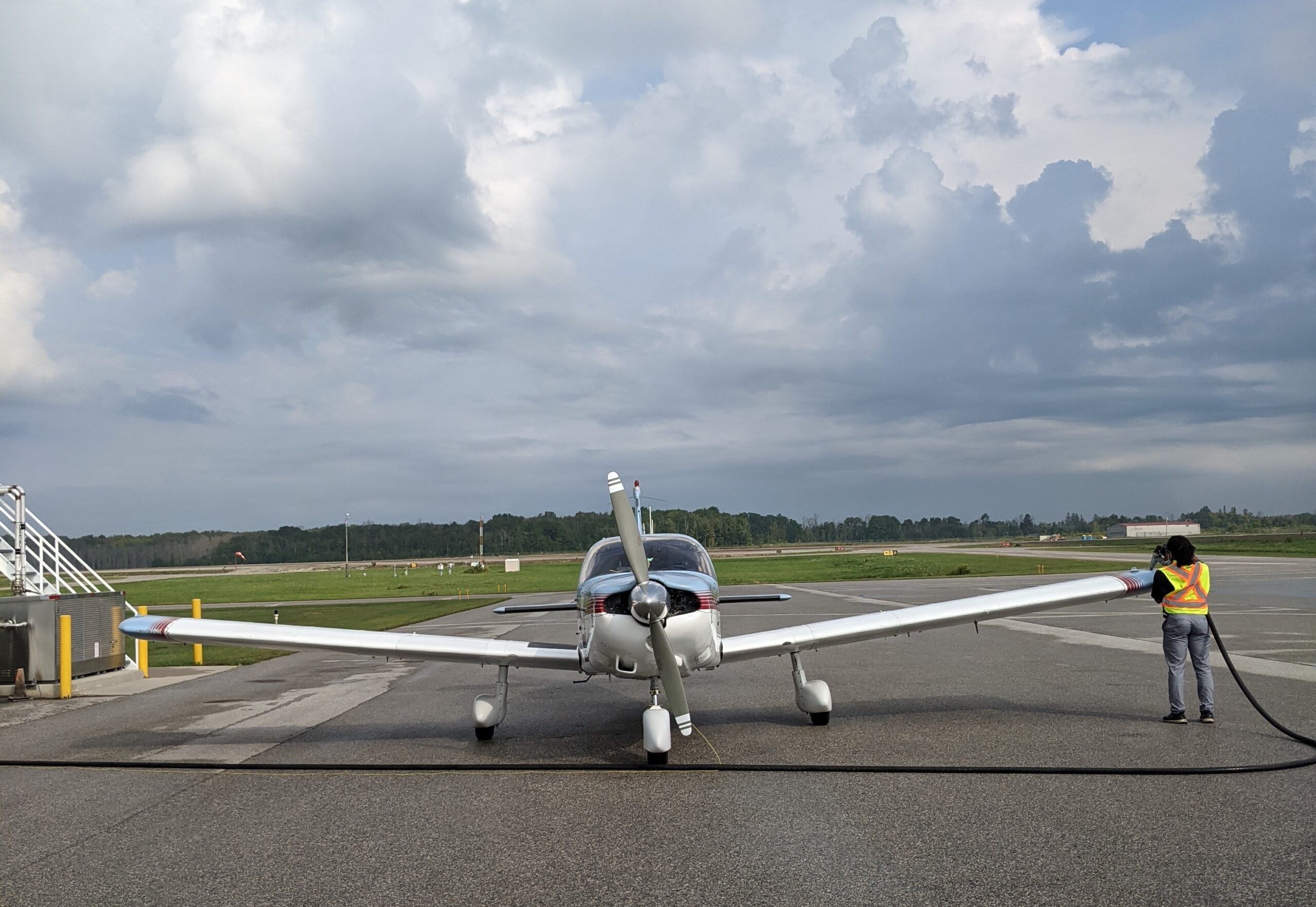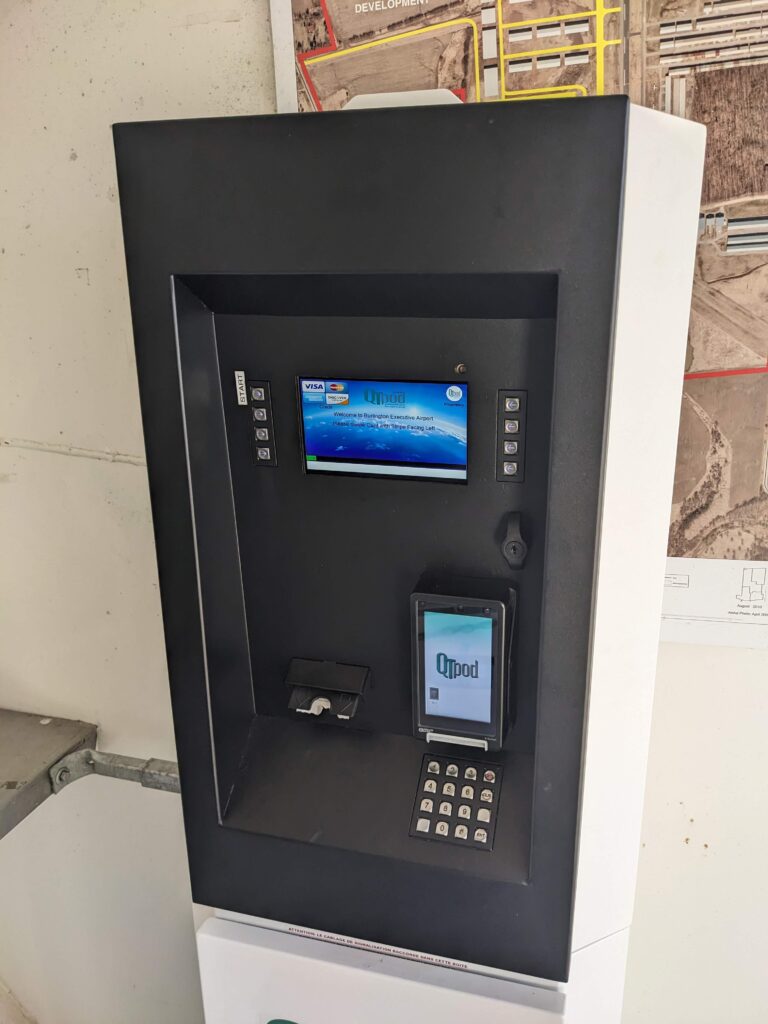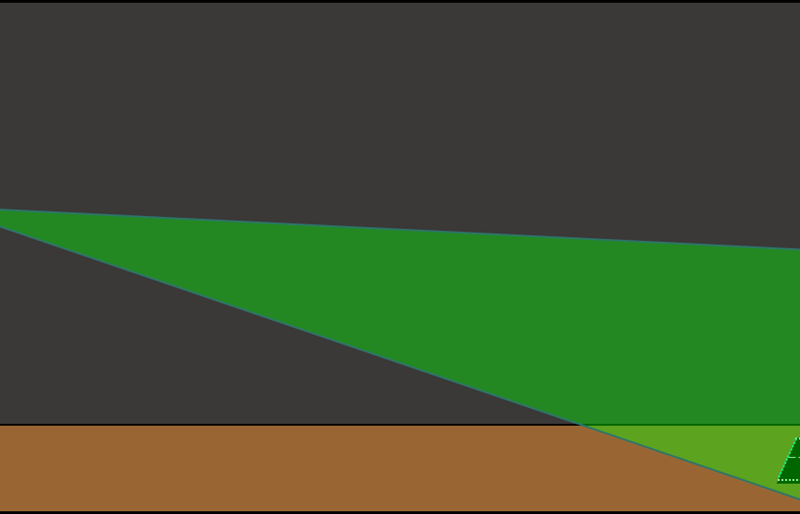One thing they don’t teach you in flight school is how to fuel your aircraft. This is something I had to learn on my own years later.
Some pilots may never have to learn this skill as a lot of airports have full service fuel pumps where the ramp attendant will do it for you. However, you might find your self at a self-serve airport where you need to top up the tanks at some point.
Personally I like to use self-serve pumps as it’s usually quicker (especially if you are on a cross country flight) to fill the tanks yourself.
Finding Cheap Fuel
ForeFlight has a “fuel” layer that will show you the last updated fuel prices at that airport. Make sure you select the correct fuel type, either 100LL or Jet-A.
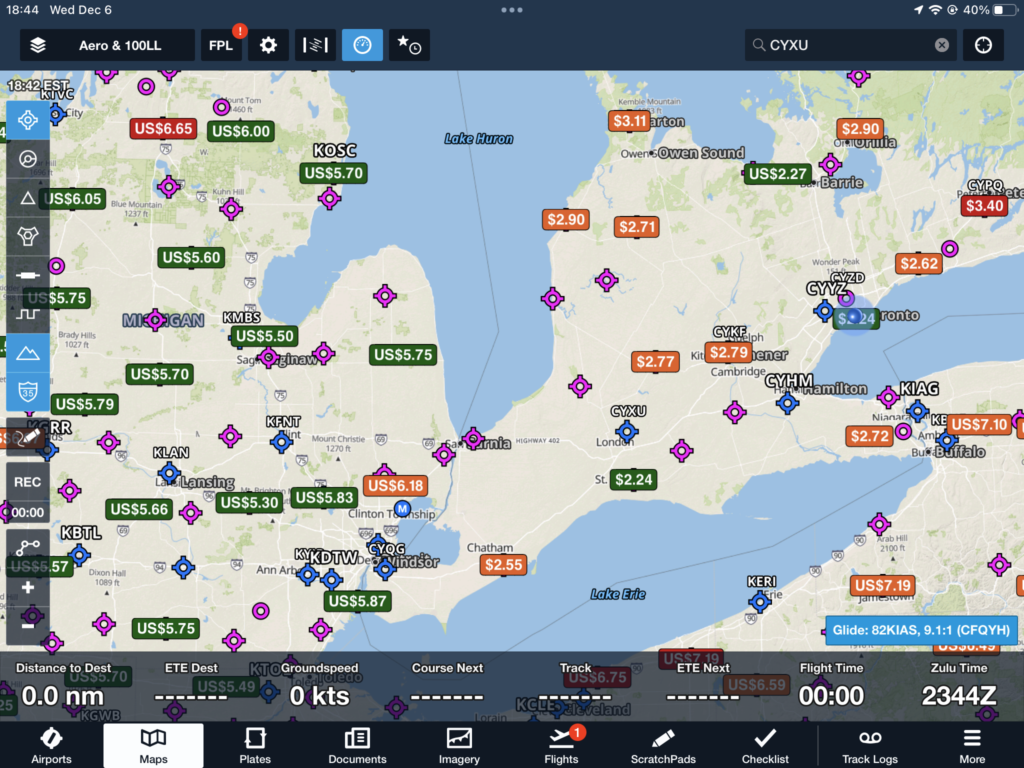
Some things to note:
- Fuel prices are updated by the aviation community, so some may be quite out of date.
- Some prices include all taxes (such as HST in Ontario) others are not inclusive of taxes.
- If there are multiple FBOs on the field, the cheapest price is displayed. So make sure you go to the correct FBO.
- Prices in Canada are per litre, while prices in the United States are per gallon.
In ForeFlight, select the airport, then click on FBOs. There you can see the prices for both full and self serve options. As well as when the price was last updated.
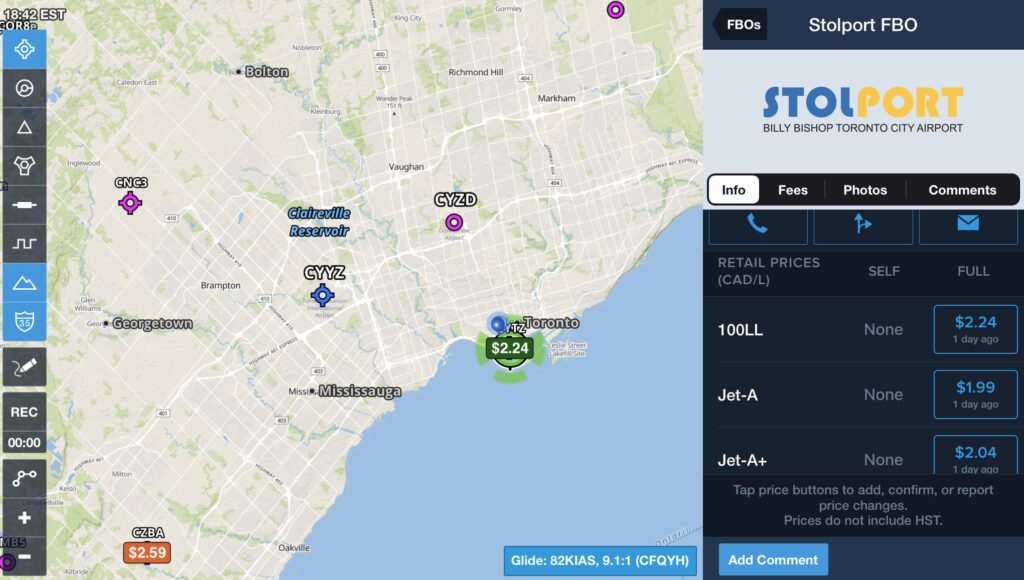
Another option would be to call ahead to the airport in question and ask the FBO directly. Additionally you can use websites like 100ll.com or 100ll.ca
Fill ‘Er Up
Self service pumps can be anywhere on the field and may not necessarily be near the FBO. Don’t be afraid to ask ATC or UNICOM for taxi instructions to the pumps. In most cases the fuel tanks will be above ground, so look for big white tanks labelled “100LL” or “AVGAS”.
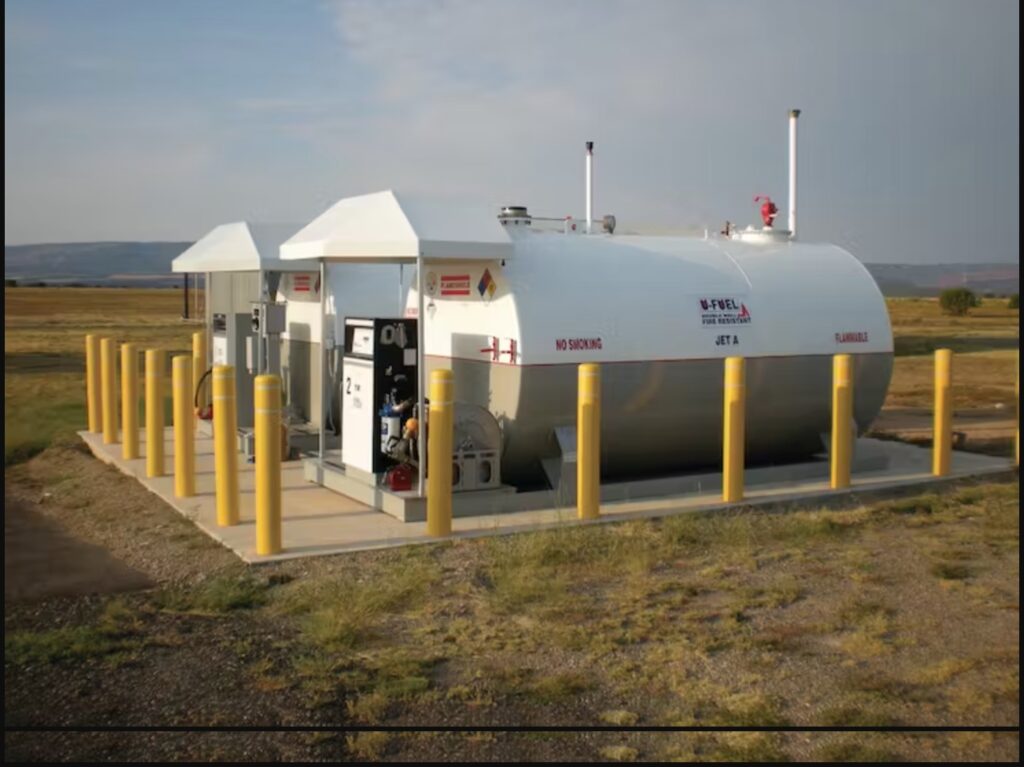
Park your aircraft with your wingtip in front of the fuel pump (parallel with the pump). Don’t point your aircraft nose or tail towards the pump. Turn off and secure the aircraft as you normally would. Get out your credit card!
Take My Money!
Self service pumps are “card lock” type pumps. This means that the pump will not unlock or turn on unless a purchase has been pre-authorized on your credit card.
Find the payment terminal and insert your credit card. In most cases you will be asked a few options to continue:
- The pump number or fuel type you would like to pay for.
- If you would like to authorize a specific dollar amount (say $1000), or
- If you would like to authorize a specific amount of fuel (say 300L).
If you are using a Canadian credit card in the United States, the terminal may ask you for a zip code. If so, take the digits in your postal code, then add two zeros to the end. For example: if your postal code is L4G 5T6, enter 45600 as the zip code.
After the card is pre-authorized the pump will unlock for a specific amount of time. Don’t feel rushed though, I’ve never had a pump time-out on me. Take your time and fuel your airplane safely.
Stay Grounded
One of the most important things when refuelling an aircraft is to ensure that the plane is grounded. This prevents static electricity from potentially igniting fuel vapours and causing a fire or explosion. Near the pump there is a grounding cable with a large alligator clip on the end. The cable is usually yellow, or located on a yellow reel.

Pull the cable out and head to your aircraft. Find a metal location on the airplane that is free of debris and paint. You want bare metal on metal contact with the clip. Most pilots (myself included) attach this to the engine exhaust. If you do, be careful as the exhaust pipe might still be hot.

Let The Fuel Flow
Head back to the fuel pump and turn it on. There is usually a switch on or near the meter that turns that specific pump on.
Grab the fuel hose and sling it over your shoulder. It can be heavy as you need to pull the hose towards the aircraft and off the reel. I like to take it 5-6 feet past the farthest tank first. This will ensure you have enough slack when you walk back to the fuel port for that specific tank.
With the hose still slung over your shoulder, unscrew the tank cap and insert the nozzle into the fuelling port. Squeeze the handle slowly at first. As you become more comfortable with the flow rate you can squeeze it further to increase the rate. Keeping the hose over your shoulder will make it easier to fill the tank and relieve the weight off your hands.
Note: Fuel will still flow for a short while after you let go of the dispensing handle. Keep this in mind so that you don’t over fill the tank.
Put the tank cap back on and head to the next tank.
Reel ‘er In
With the hose still slung over your shoulder head back to the pump. There should be a switch or button next to the fuel hose reel that will automatically retract the hose. It’s best practice to not let the nozzle drag on the ground so keep ahold of it as the hose is reeled in.
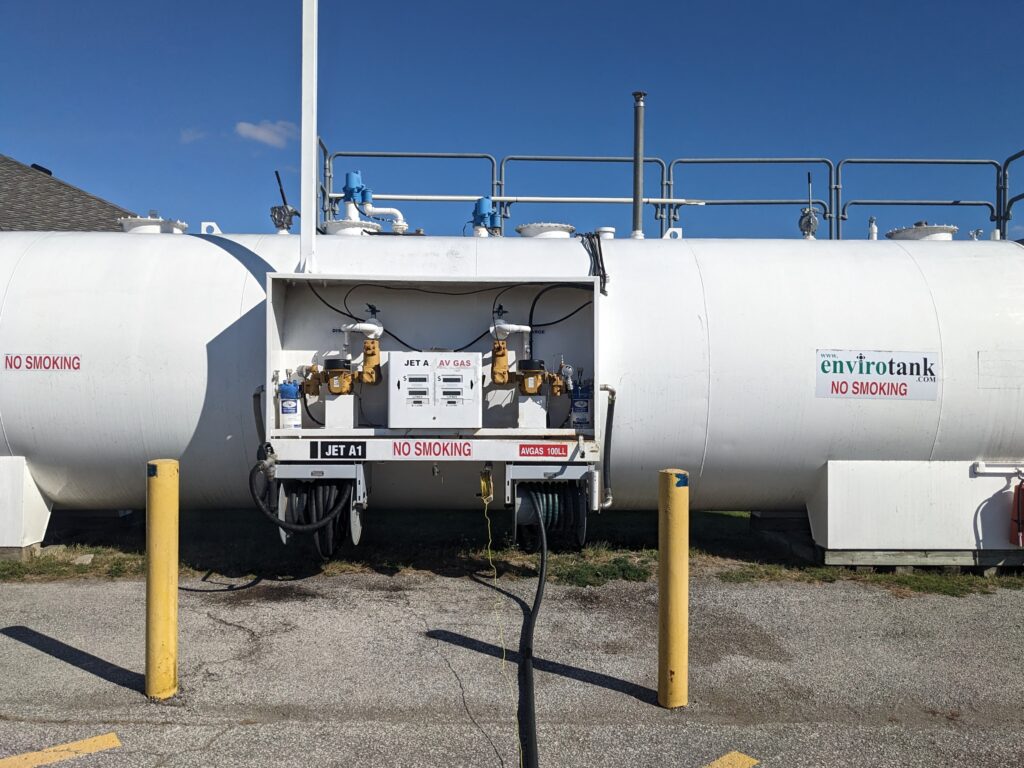
Place the nozzle back into the holster and head back to the airplane to unhook the grounding cable. Bring that back with you and give a tug on the grounding cable to engage the retracting mechanism in the grounding cable reel.
Turn off the pump.
Would You Like A Receipt?
Go back to the payment terminal and confirm that the transaction is complete. Grab the receipt if you want one.
Did It Pass The Test?
Fuel pumps have many filters and quality checks to ensure there are no contaminates. But as always, you should confirm this is the case yourself. Follow your normal fuel testing procedure for each tank you filled before taking off.
One item to note. Avgas is blue, Jet-A is straw coloured. However, if you inadvertently filled a partially full tank that already had Avgas in it with Jet-A, the colour may still be blue. Always triple check that you are using the correct pump when filling your airplane.
